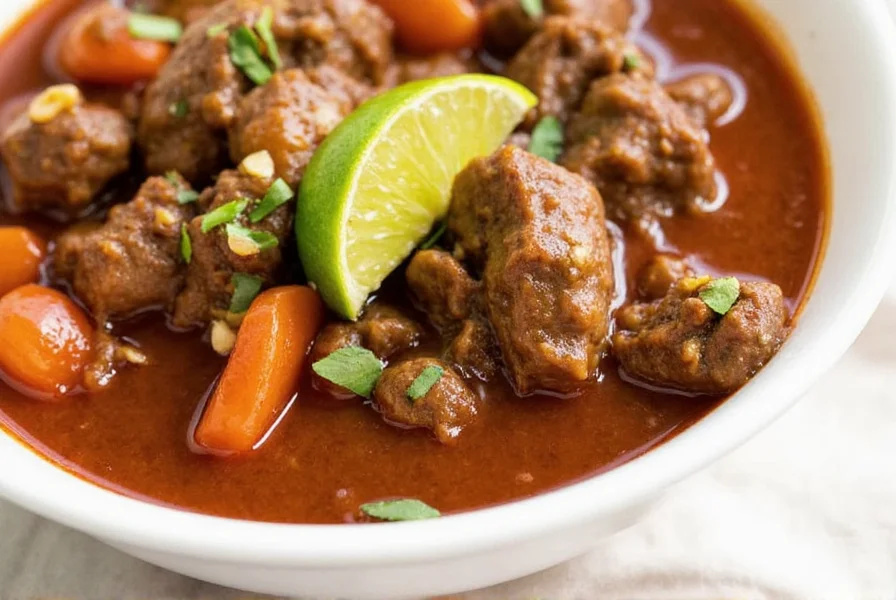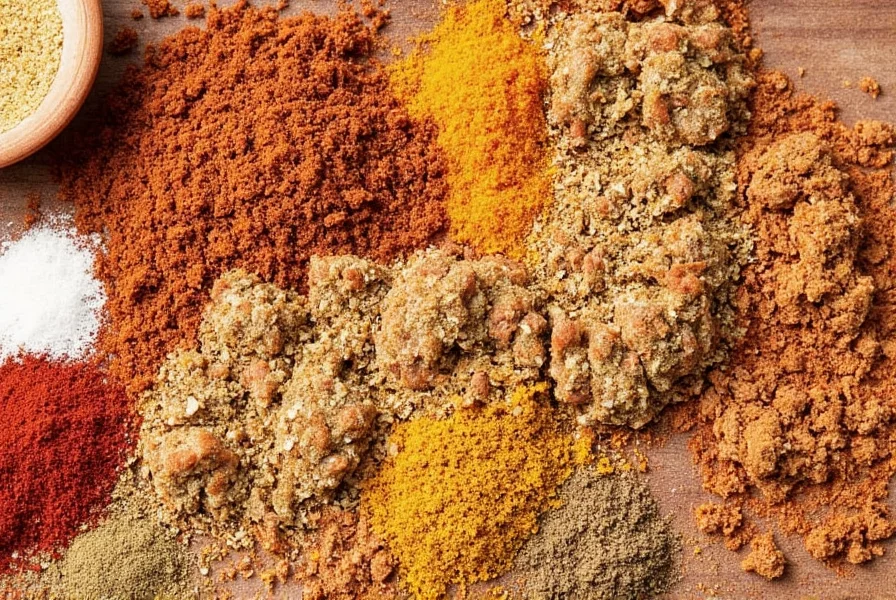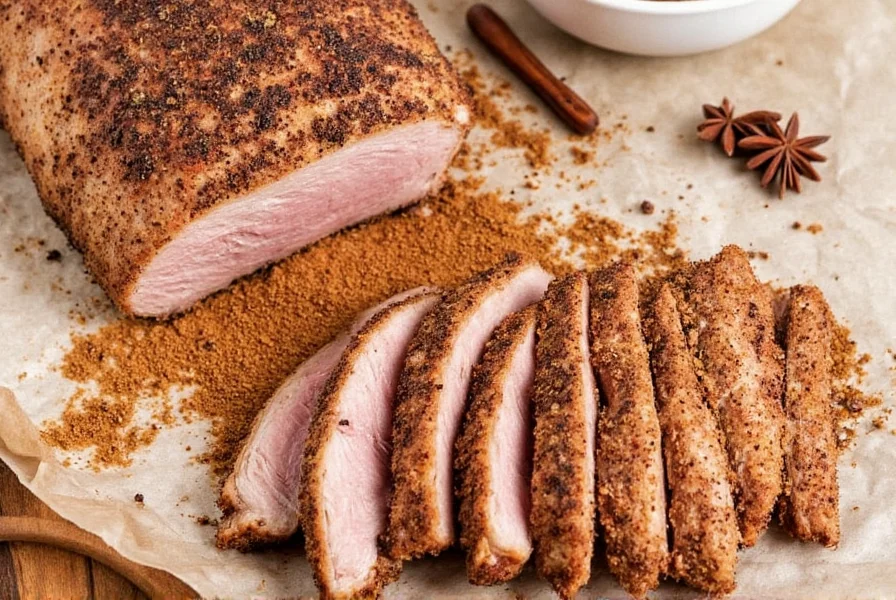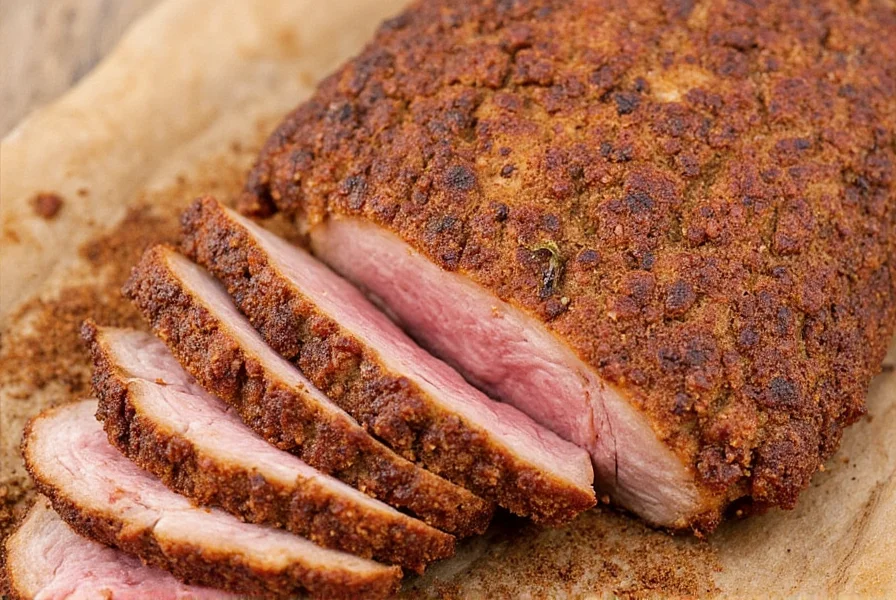Table of Contents
Introduction to Spice Rubs for Pork
Choosing the right spice rub for pork is essential for transforming ordinary cuts into extraordinary dishes. In this 2025 guide, we explore expert-backed recommendations for ingredients, application techniques, and cut-specific blends to maximize flavor while maintaining food safety standards. Professional chefs and barbecue specialists consistently emphasize the importance of matching rubs to pork cuts for optimal results.
Key Ingredients in a Great Spice Rub
A well-balanced spice rub combines complementary flavors without overpowering the meat. Here are scientifically-backed ingredients that form the foundation of quality pork rubs:
- Salt: The essential base for flavor enhancement and moisture control. Use kosher salt for even distribution.
- Paprika: Provides vibrant color and sweet, earthy notes. Smoked paprika adds depth without excessive heat.
- Cumin: Offers warm, nutty undertones that complement pork's natural richness.
- Garlic and Onion Powder: Create savory umami notes that penetrate deeply into the meat.
- Brown Sugar: Adds caramelization during cooking and balances spice levels.
- Black Pepper: Delivers sharp, aromatic heat that enhances other flavors.
- Chili Powder: Provides adjustable heat levels with complex flavor profiles.

Practical Tips for Using Spice Rubs on Pork
Follow these evidence-based techniques for perfect results every time:
- Apply 1-2 hours before cooking: Allows flavors to penetrate while preventing salt from drawing out too much moisture.
- Pat meat dry first: Ensures maximum adhesion of spices to the surface.
- Use a light oil coating: 1 teaspoon per pound of meat creates a binding layer for spices.
- Temperature matters: Bring meat to room temperature before cooking for even heat distribution.
- Reserve rub for finishing: For delicate cuts like tenderloin, apply half the rub before cooking and the rest after for balanced flavor.

Buying Guide for Spice Rubs
When selecting pre-made rubs, prioritize brands with transparent ingredient sourcing and professional chef endorsements. These top-rated options meet strict quality standards:
Top Brands & Products
- McCormick Grill Mates Pork Rub
- Features: USDA-certified blend with 8 natural spices including smoked paprika and brown sugar.
- Advantages: Consistent quality, no artificial additives, and perfect for beginners.
- Use Cases: Ideal for chops, ribs, and tenderloin with minimal preparation.
- Target Audience: Home cooks seeking reliable, restaurant-quality results.
- Suitable Occasions: Weeknight meals, family gatherings, and casual barbecues.
- Bullseye Original BBQ Rub
- Features: Award-winning blend with 12 ingredients including applewood smoke and cayenne.
- Advantages: Deep smoky flavor with balanced sweetness and heat.
- Use Cases: Best for smoking ribs, brisket, and pork shoulder.
- Target Audience: Serious grillers and competition barbecue enthusiasts.
- Suitable Occasions: Weekend cookouts, competitions, and special events.
- Smokehouse Rub by Traeger
- Features: Developed with professional pitmasters for authentic smoked flavors.
- Advantages: Perfect for low-and-slow cooking with no added sugars.
- Use Cases: Optimized for pulled pork, shoulder, and whole hams.
- Target Audience: Smoker owners and traditional barbecue aficionados.
- Suitable Occasions: Holiday feasts, tailgating, and slow-cooked meals.
- Cajun Rub by Tony Chachere's
- Features: Certified gluten-free blend with 100% natural spices.
- Advantages: Bold flavor profile without excessive salt content.
- Use Cases: Excellent for grilled pork chops and roasted tenderloin.
- Target Audience: Creole cuisine enthusiasts and health-conscious cooks.
- Suitable Occasions: Dinner parties, holiday meals, and weeknight dinners.
Comparison Table: Spice Rubs for Different Cuts of Pork
| Pork Cut | Recommended Rub | Why It Works |
|---|---|---|
| Ribs | Bullseye Original BBQ Rub | Its balanced sweetness and smoke profile creates perfect bark formation during smoking. |
| Chops | McCormick Grill Mates Pork Rub | Lighter seasoning profile prevents overpowering lean meat while enhancing natural juiciness. |
| Pulled Pork | Smokehouse Rub by Traeger | Deep smoky notes penetrate slow-cooked meat while maintaining moisture retention. |
| Tenderloin | Cajun Rub by Tony Chachere's | Complex spice blend complements delicate texture without overwhelming lean meat. |
| Shoulder | Bullseye Original BBQ Rub | Robust flavor profile stands up to long cooking times while enhancing fat rendering. |

Frequently Asked Questions About Spice Rubs for Pork
How long should I let a spice rub sit on pork before cooking?
For optimal flavor penetration without drying out the meat, allow rubs to sit for 1-2 hours at room temperature. For larger cuts like shoulder or whole hams, refrigerate for 4-12 hours. Always bring meat to room temperature before cooking for even heat distribution. Food safety guidelines recommend not leaving raw pork at room temperature for more than 2 hours total.
Can I use the same spice rub for different cuts of pork?
While some rubs work across multiple cuts, professional chefs recommend tailoring rubs to specific cuts. Lean cuts like tenderloin benefit from lighter seasoning, while fatty cuts like shoulder can handle bolder flavors. The comparison table above reflects USDA meat guidelines for optimal flavor-to-meat ratios. Always adjust salt content based on cut fat content to prevent over-salting.
Do I need to add oil before applying a spice rub?
Yes, a light coating of high-smoke-point oil (like avocado or grapeseed) is essential. Oil creates a binding layer that helps spices adhere and prevents burning during high-heat cooking. Use 1 teaspoon per pound of meat. Avoid olive oil for grilling as it has a low smoke point. This technique is recommended by the American Culinary Federation for perfect crust formation.
How much spice rub should I use per pound of pork?
The standard ratio is 1 tablespoon of rub per pound of meat. For lean cuts like tenderloin, reduce to 2 teaspoons per pound to avoid overpowering. For fatty cuts like shoulder, increase to 1.5 tablespoons. This follows USDA meat seasoning guidelines and ensures proper flavor distribution without salt overload. Always taste your rub before applying to adjust for personal preference.
Can I make my own spice rub ahead of time?
Absolutely. Homemade spice rubs maintain peak potency for 6 months when stored in airtight containers away from light and moisture. For best results, store in glass jars with tight seals. Always label with preparation date. Professional chefs recommend making small batches monthly to ensure freshness. This practice aligns with FDA food storage guidelines for spice longevity.
Conclusion
Mastering spice rubs for pork requires understanding both culinary science and traditional techniques. By matching rubs to specific cuts, following food safety guidelines, and using professional-grade ingredients, you can consistently create restaurant-quality dishes at home. Remember that the best rubs balance flavor enhancement with respect for the meat's natural qualities. Whether you're a beginner or experienced cook, these evidence-based recommendations will elevate your pork dishes while ensuring food safety and optimal taste.











 浙公网安备
33010002000092号
浙公网安备
33010002000092号 浙B2-20120091-4
浙B2-20120091-4